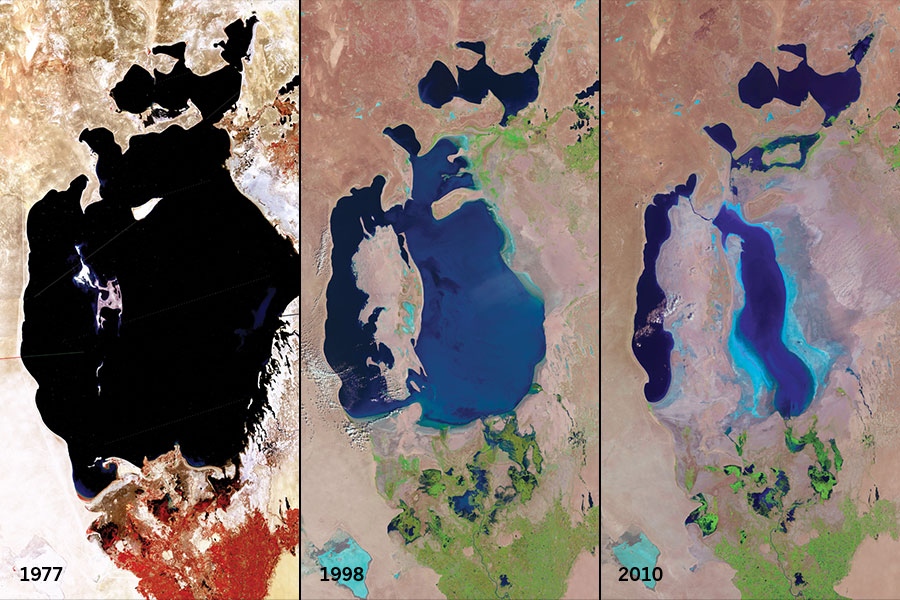
Landsat 8 Captures dramatic details of the Earth; will push the Earth – Monitoring Envelope
After record breaking 28 years of service, Landsat 5 was decommissioned on January 6th 2013. Landsat 6 had failed during the launch and Landsat 7 is partially blind due to its mirror problem. So, the Landsat data user community mourned the loss of Landsat 5. For them, here is the new hope. On 11th February 2013, The Landsat Data Continuity Mission has made one of the most important space launches of the year. Landsat-8 was successfully launched into orbit from Vandenberg Air Force Base in California, which will continue the continuous 40-year record of observations of huge change for the planet.
 The contribution of Landsat Mission:
The contribution of Landsat Mission:
From the first launch in 1972, Landsat was designed to provide a global record of land-cover and land-use change. For an instance, from the following Landsat satellite series, collected from USGS EROS DATA CENTER, we can see that, the Aral Sea in central Asia is shrinking significantly from 1977 to 2010 because of water diversion for agricultural use. This critical piece of information can provide the information and from that we can construct our knowledge to shape our future. Like such we by using such change information we can act in time before it come to the neck and making an intervention plan on time as well. The earliest satellites captured images at several visible-light and near-infrared frequencies, all with a resolution of 80 meters. Landsats 4 and 5 could provide the images of a 30 – meter resolution and had added the infrared band which has pushed the research envelope to aid studies of soil moisture, vegetation etc. By adding a multi-spectral sensor, Landsat 7 has achieved higher spatial resolution capability and can provide with 15-meter resolution. Through careful calibration, the program has built up a continuous 40-year record of observations of huge change for the planet and Landsat 8 is ensuring the continuation of the world’s longest-lasting satellite-based remote sensing operation.
What Landsat- 8 offers?
Landsat-8 carries two Sensors. Operational Land Imager (OLI) and Thermal Infrared Sensor (TIRS). Operational Land Imager (OLI) has total 9 spectral bands (30 meter resolution), including two new bands (Band 1 – Coastal aerosol, Band 9 – Cirrus) to previous Landsats’ visible, near infrared, and shortwave infrared measurements and a panchromatic band of 15 meter resolution. Band 9 – Cirrus, is designed to collect data about high altitude cirrus clouds and Band 1 – Coastal aerosol to collect data about aerosols and water quality in lakes and shallow coastal waters. TIRS will collect data on heat emitted from Earth’s surface in two thermal bands, as opposed to the single thermal band on previous Landsat satellites. For more info visit Landsat – 8
Landsat 8 is scheduled to begin operations after 100 days after entering orbit and data products from Landsat 8 will be available to all users at the end of May 2013.




